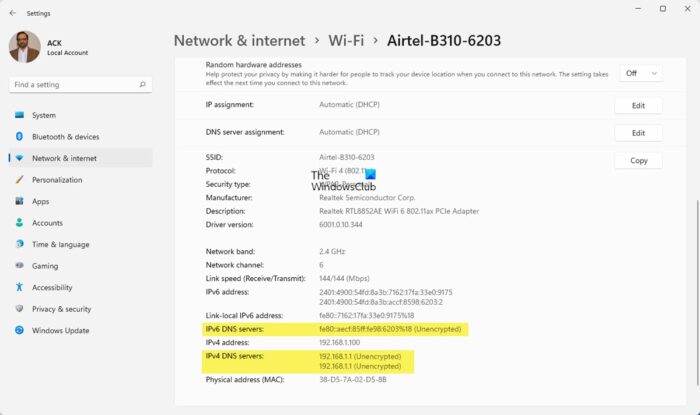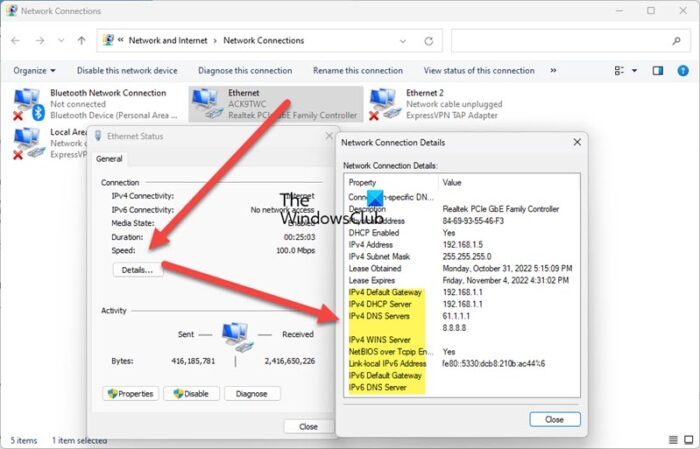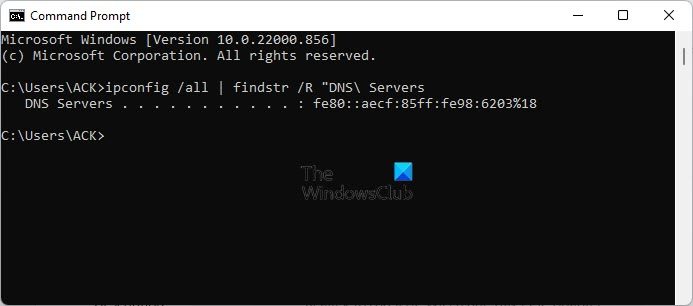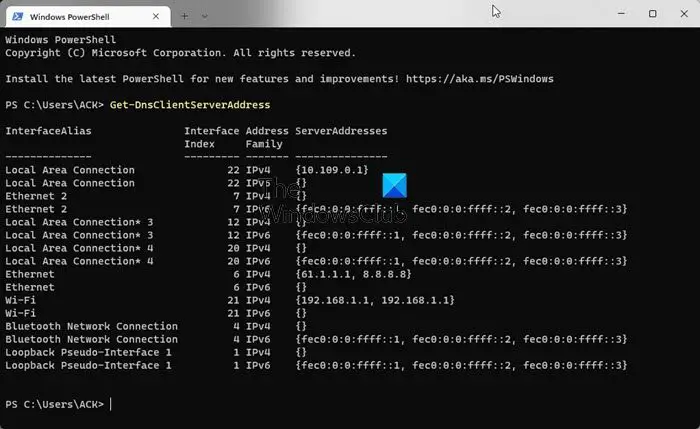In this post, we will show you how to find the DNS server on your Windows 11/10 computer. You may need to know your DNS server while setting up a new network for your computer.
How to find DNS Server on Windows 11/10 computer
You can find a DNS server on a Windows 11/10 computer using any one of the following methods:
- Via Windows Settings
- Via Network Connections Details
- Using Command Prompt
- Using PowerShell command.
Let us see each of them one by one.
1] Via Windows Settings

To find the DNS server on Windows 11/10 using Settings app, do the following:
- Press Win+I to open Windows Settings
- Click open Network & internet settings from the left side
- Click on the Wi-Fi or Ethernet properties
- On the next page you will see the numbers under:
- IPv6 DNS servers
- IPv4 DNS servers.
2] Via Network Connections Details

To find the DNS server on Windows 11/10 via Network Connections, follow these steps:
- Search for ‘Network Connections‘
- Click on the View network connections result
- In the Network Connection folder that opens, locate your Internet connection
- Right-click on it and select Status
- From the Status window, click on the Details button
- Now you will see the DS server and other details there.
3] Using Command Prompt

Open a command prompt window and execute the following command:
ipconfig /all | findstr /R "DNS\ Servers"
You will see the DNS Server details.
4] Using PowerShell command

Open a PowerShell window and execute the following command:
Get-DnsClientServerAddress
The DNS server and other details will be displayed.
How do I find my primary and secondary DNS in Windows 11?
To find the Primary and Secondary DNS in Windows 11, you can follow the same method described in the article. You need to use the Network Connections panel to get it done. Alternatively, you can also use the Command Prompt to get the job done.
How do I fix DNS problems on my Windows PC?
To fix DNS problems on your Windows computer, try the following suggestions:
- Check for issues with the ISP
- Power-cycle modem, router, and computer
- Renew IP, Flush DNS, Reset Winsock
- Perform a Clean Boot on the system
- Activate the Microsoft LLDP Protocol Driver
- Install latest Network Drivers
- Change Power Plan.
Now read: How to change DNS server using Command Prompt and PowerShell.
Leave a Reply